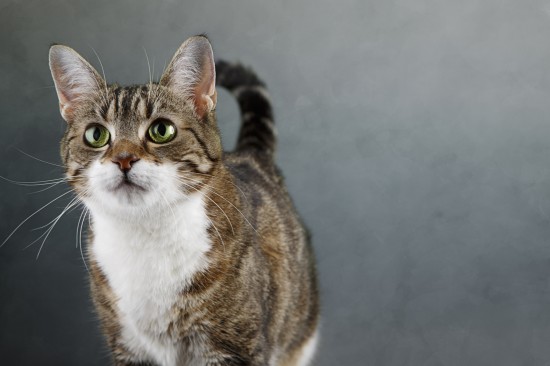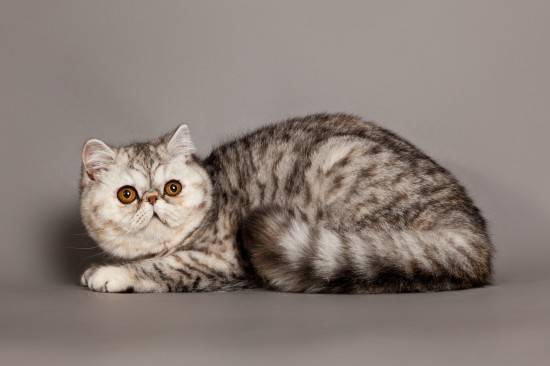
The ears flatten backwards, cat is snarling with the sharp teeth
exposed as he has his mouth wide open, and the eyes dilated.
This is prime example of aggression in a cat.
Learning and understand the different aggressions in your cat
has will help in combating the problem.
Aggression sometimes will be very noticeable with out knowing
what happened for your cat to have this type of aggression. Some
of the warning signs are eyes wide-open, dilated pupil,
flattened ears, tail lashing, or brisk tail, growling ,snarling,
hissing ,or even spitting.
Unable to escape is one of the aggressions that a cat may have.
They will be frightened and their response mechanism will go
off. Most cats will find and escape route, but sometimes there
is none and a cat will be have been triggered to have this type
of aggression.
Sudden movements, sounds, imaginary threats, are some of the
ways that fear aggression a cat will have. Timid cats can be big
aggressors as the fear is real for them even if the threat is
not real. Experiences with fear will also play in with the fear.
Fear aggression is a natural reaction for a cat especially
physical punishment, which is a big threat to a cat. That is the
most fearful thing a cat will react with real aggression. In
addition, your cat will not want to have nothing to do with you.
Physical punishment on your cat or any cat should never take
place.
When you see that aggression is starting you can start to pet
the cat immediately to let him know that he has nothing to fear.
Petting a cat helps to relax a cat and relaxes you.
Pain for a cat will lead to aggression. This is also a sign that
you need to be watching if you feel that the aggression is not
one that you can see or point out. Taking the cat to the vet and
have the cat exam will help knowing if the cat is really in
pain. Getting treatment for the pain will help you and the cat.
Cats can be sensitive to petting. A cat’s skin is sensitive so
over petting or hard petting can be painful for your cat. Some
cats will become fell threaten or over stimulated with petting.
Some of this fear can come from past socializing with people.
When the cat starts with the aggressions, start with speaking
soft and gentle to the cat, this will help with the fear of the
cat under control. If the cat has a hold of you with the teeth,
gentle stroke the tips of this paws and then the toenails until
he releases. Never try to open the paws, as this will cause pain
to the cat. Not staying calm at this point will only lead your
cat to fear you more with the sudden movements and loud noise.
Do not pull away quickly after the attack; continue with the
activity with the cat so that he will know that you are not
there to hurt him.
If the aggression is on a male cat, neutering could be an option
to have done. Neutering will also help with catfights and
injuries with your cat. You should contact your veterinarian for
more information on getting your cat neutered.
Behavior problems can be an underlying stress causing the
aggression, such as towards people. Stress can be caused by a
cats change in the environment. Baby in the home, visitors that
come to visit and stay in the home. A new pet, a dog can really
become stressful for a cat.
There is medication, experts with cat aggressions, that can help
with the aggression of the cat if it is serious. Do not wait if
you are unable to control the aggression. Contact an expert for
ways of dealing with the aggression.
Training your cat for aggression will take a lot of patience and
training in other areas of the cat life for both of you and your
cat to have a great relationship.
Always make time for your cat with actives and relaxing.
Relaxing with the cat is a great way for the both of you to
spend time. Caring for your cat and treating the proper
behaviors when they start will help with aggression that your
cat may experience.
 Signs Your Cat May Be Suffering From A Urinary Tract Infection
Signs Your Cat Ma
Signs Your Cat May Be Suffering From A Urinary Tract Infection
Signs Your Cat Ma
 Health Issues Associated With The Shorthair Exotic
Health Issues Ass
Health Issues Associated With The Shorthair Exotic
Health Issues Ass
 How To Stop Your Cat From Eating Dog Food
How To Stop Your
How To Stop Your Cat From Eating Dog Food
How To Stop Your
 Fun Interesting Facts About Ferrets
Fun Interesting F
Fun Interesting Facts About Ferrets
Fun Interesting F
 Consider a House Bunny for Your Next Pet
Consider a House Bunny for Your Next Pet
Copyright © 2005-2016 Pet Information All Rights Reserved
Contact us: www162date@outlook.com